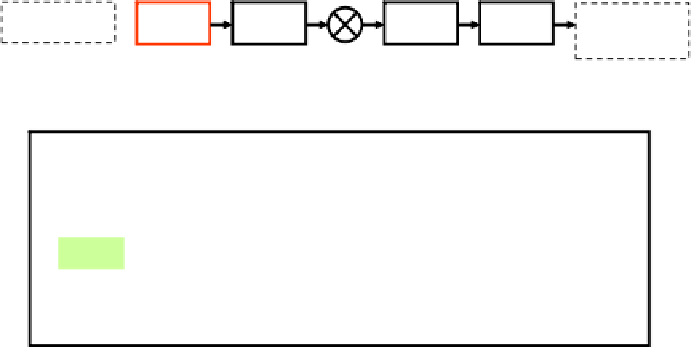Information Technology Reference
In-Depth Information
AV information
AV information
X
Y
Code
Code
…011011…
noise
…010011…
Audio/Visual
information
Received
Audio/Visual
information
Source
Coding
Channel
Coding
Channel
Decoding
Source
Decoding
Signal
assign codes to visual information
01
100
101
1100
䋺
motion
residual
mode
parameter
䋺.
texture
Quantize/
compaction
Video
Codes
Distortion
Visual information is distorted by both source coding and channel error.
Æ
Quality is measured by PSNR versus Bitrate.
Fig. 7
Video Coding in Shannon's model
3.2 Main Components of Video Coding
Video coding usually consists of four main components including prediction,
transform, quantization and entropy coding. Prediction reduces relative redun-
dancy exploiting correlation within a picture or across several pictures. The resid-
ual signal that represents the difference between the original and the predicted
signal is encoded. Transform is a process for energy compaction of the signal to
reduce the correlation of the symbols. In practice, the signal is transformed from a
spatial domain to a frequency domain. There are several transforms that have been
used in typical image and video coding standards including Discrete Cosine
Transform (DCT) and Discrete Wavelet Transform (DWT). Quantization is a
technique that reduces the amount of information directly. There are two main
methods of quantization including Scalar Quantization and Vector Quantization.
Entropy Coding is a reversible coding method based on statistical characterization
of the symbols to be encoded. Huffman coding and arithmetic coding are typical
examples of entropy coding schemes.
3.2.1 Prediction
A picture has high correlation between neighboring pixels in both spatial and tem-
poral directions. Consequently, the amount of information can be reduced by the
combination of the prediction between pixels and the coding of the prediction er-
ror (residual signal). The prediction exploiting spatial correlation within a picture
is known as Intra prediction, while the prediction exploiting temporal correlation


















